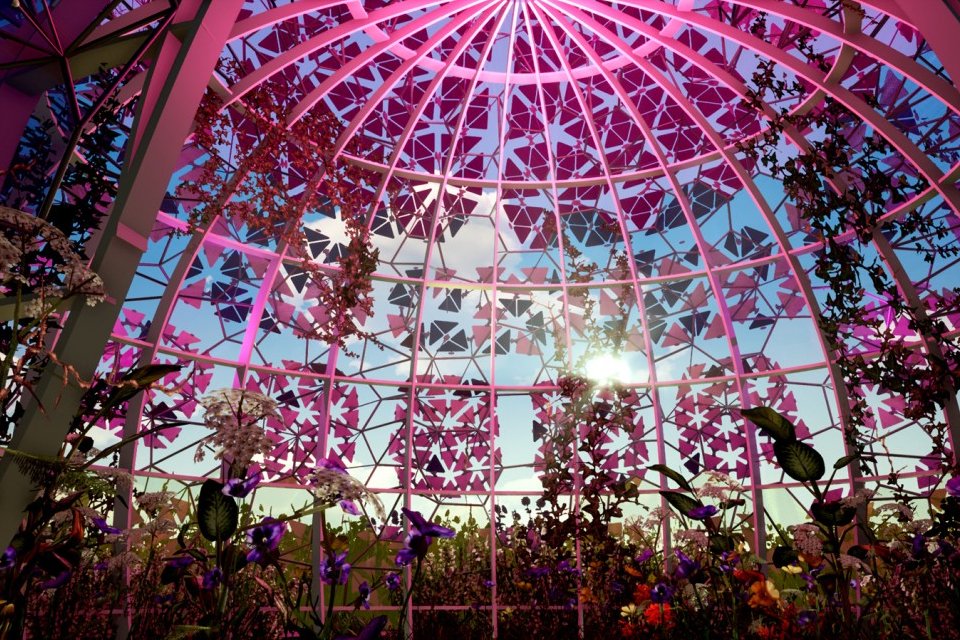Shapeshifters: Can buildings behave like organisms?

This rendering is an example of the type of bio-informed responsive architecture that a team of Cornell researchers and their colleagues hope to create using design parameters based on morphogenesis, or the emergence of form. The rendering is of the Agrivoltaic Pavilion, part of the project Sustainable Architecture & Aesthetics, which was funded by the Grainger Foundation.
May 4, 2023 — You wouldn’t think one could learn how to fix cardiac malformations by analyzing brain cancer or plants.
But this is exactly what a team of researchers — including David Odde, a co-PI of the project, Professor in the Department of Biomedical Engineering, and Co-Director of the Cancer Bioengineering Initiative — aim to do, with a five-year, $3 million grant from the National Science Foundation. The project reimagines the convergence of architecture and biology to understand how organisms create internal structures.
They plan to study how plants, fetal chick hearts, and adult brain cancers create forms like leaves and ventricles, and they’ll use the organisms’ process to create a living, breathing building façade that reacts to its environment in real time, like an organism. Prof. Odde and colleagues will tackle the glioblastoma work.
Ultimately, their work could help create climate-adaptable plants, prevent heart defects, treat brain cancer and design more sustainable buildings.
“Our overarching goal is to see if there are common rules that apply across plants and animals, through which shape and size emerge from the interaction of the cells,” says Adrienne Roeder, the Cornell-based lead principal investigator (PI) of 13 researchers spanning plant biology, biomedical engineering, and architecture from Cornell, the University of Minnesota, and Tuskegee University.